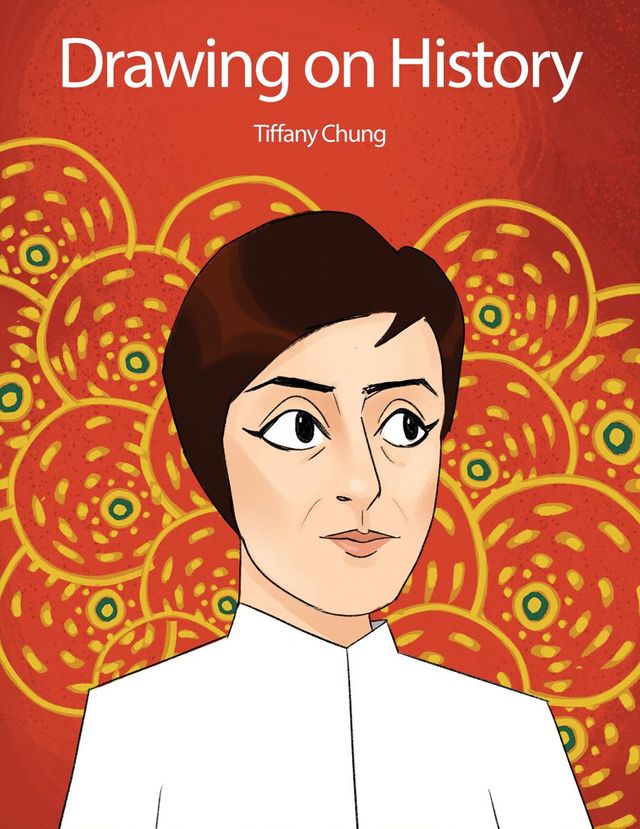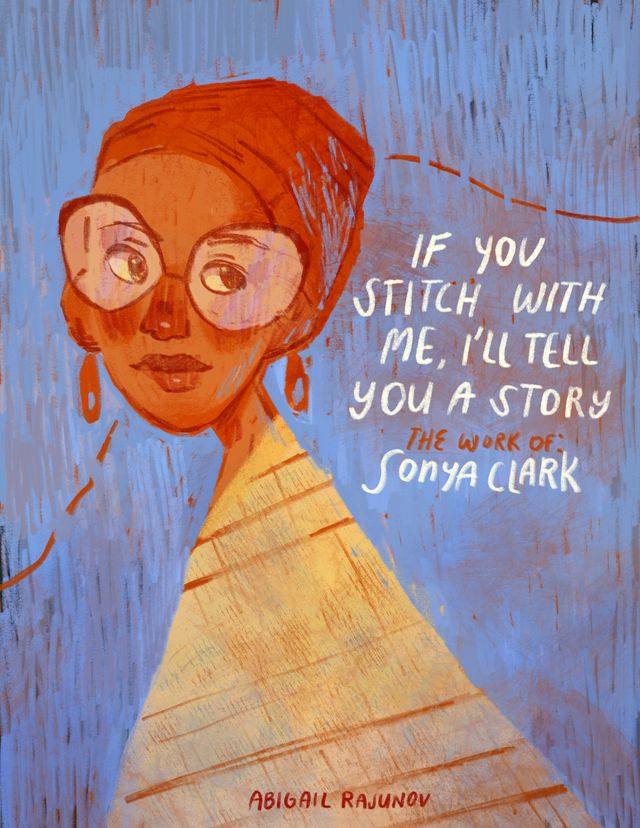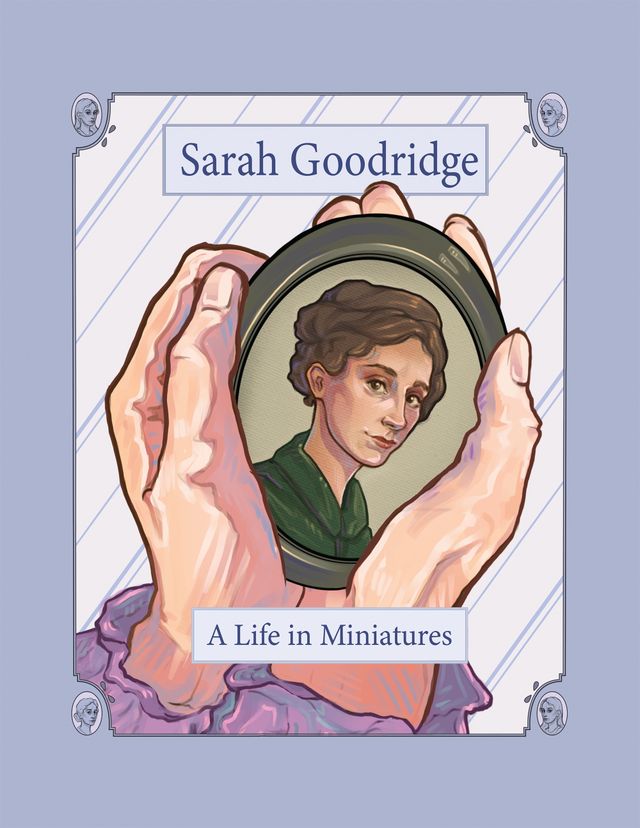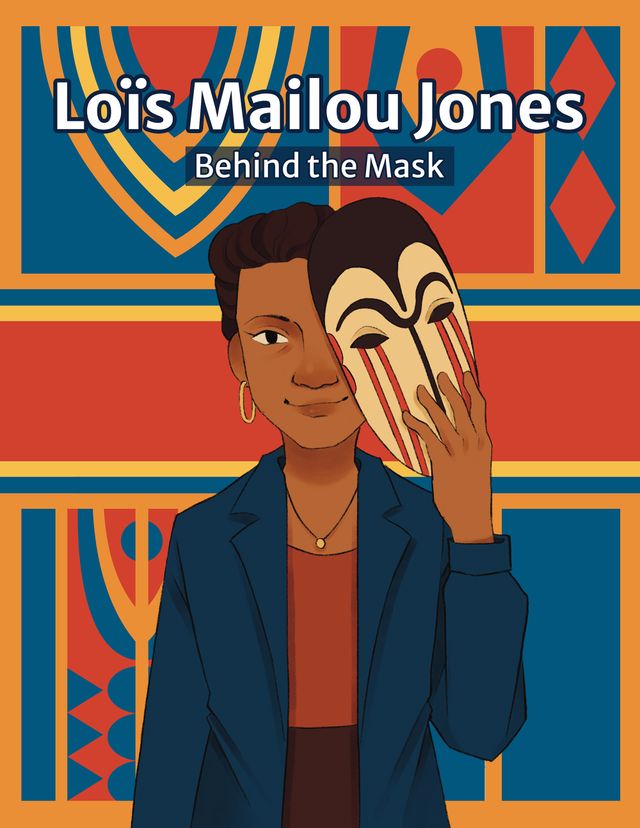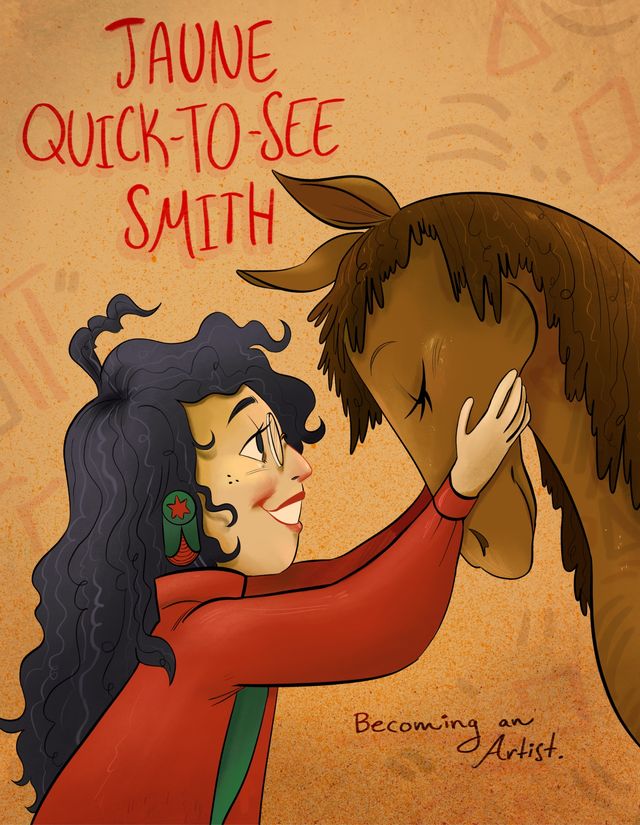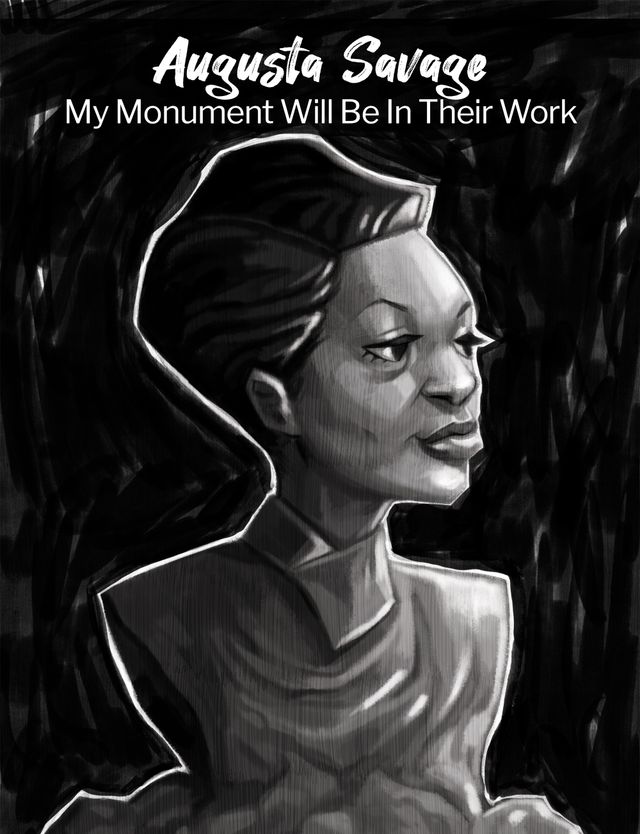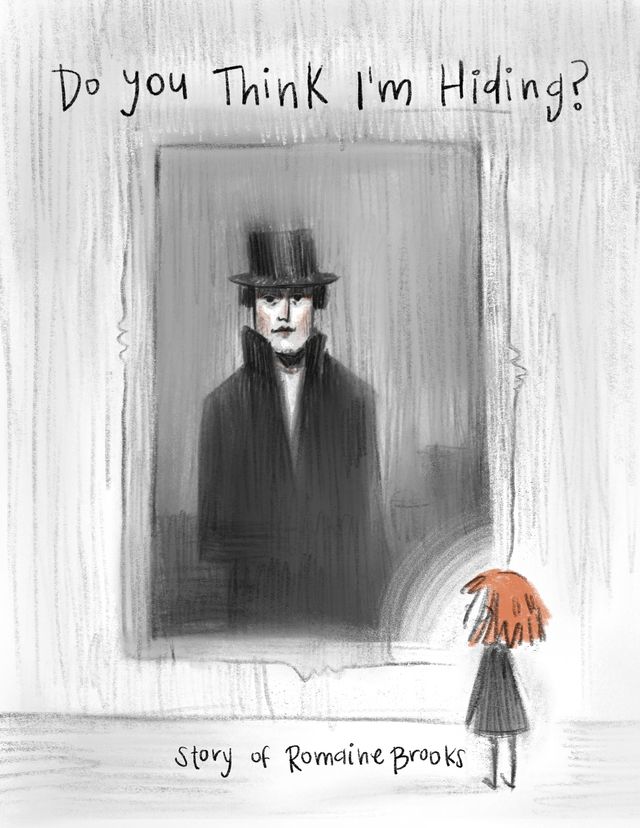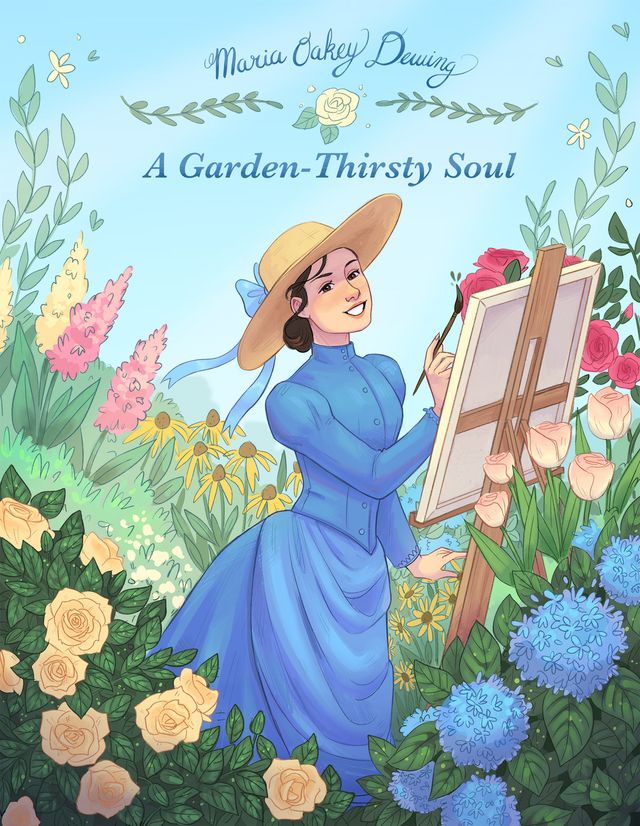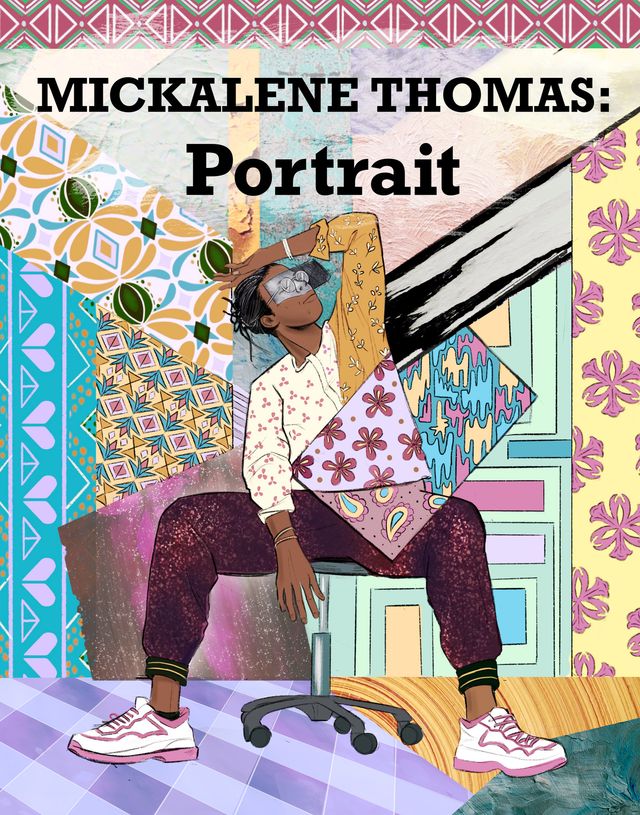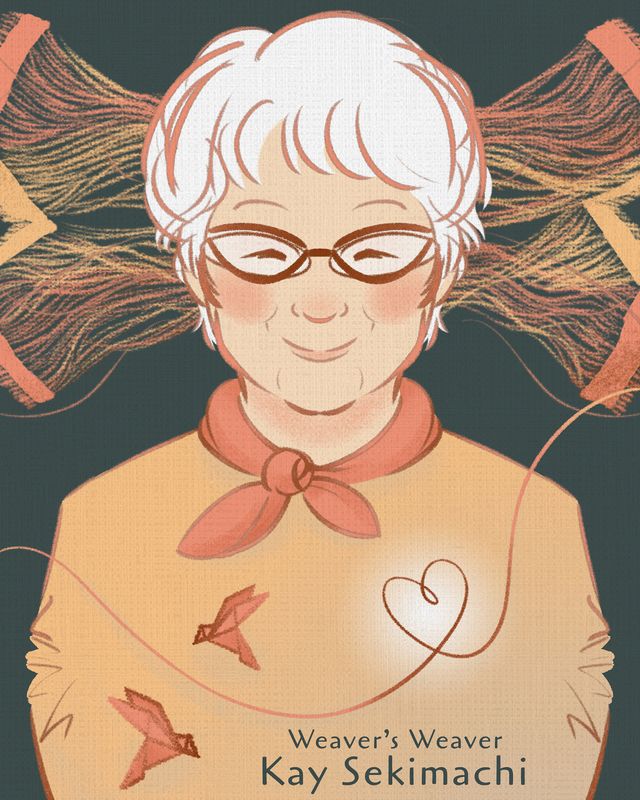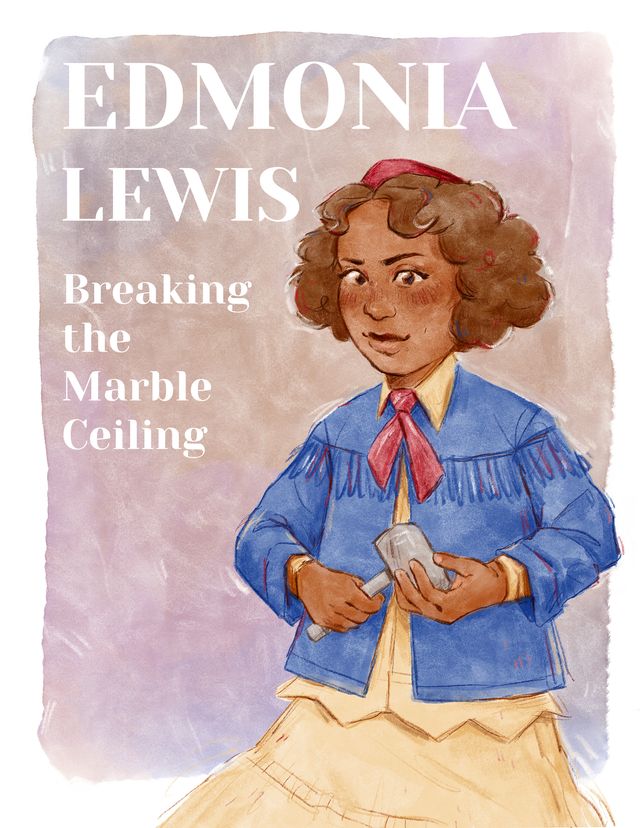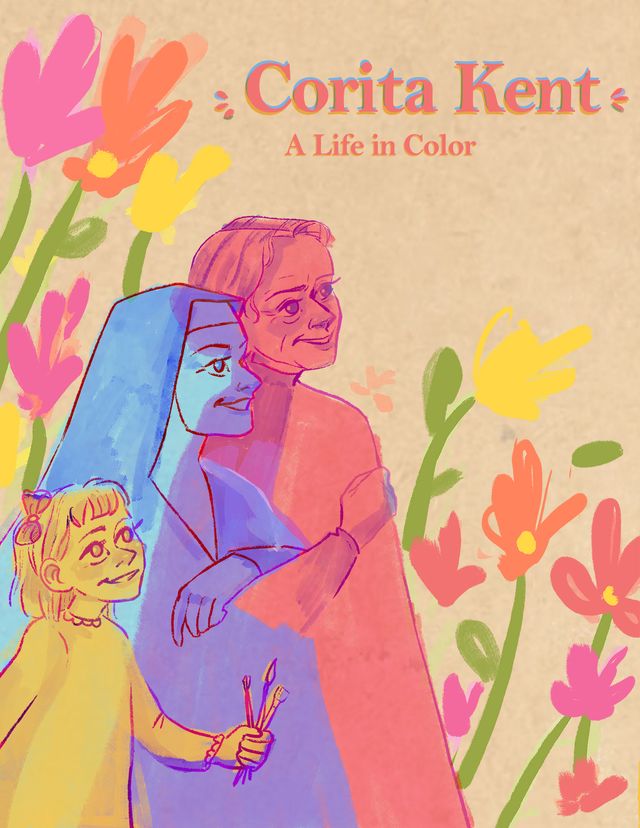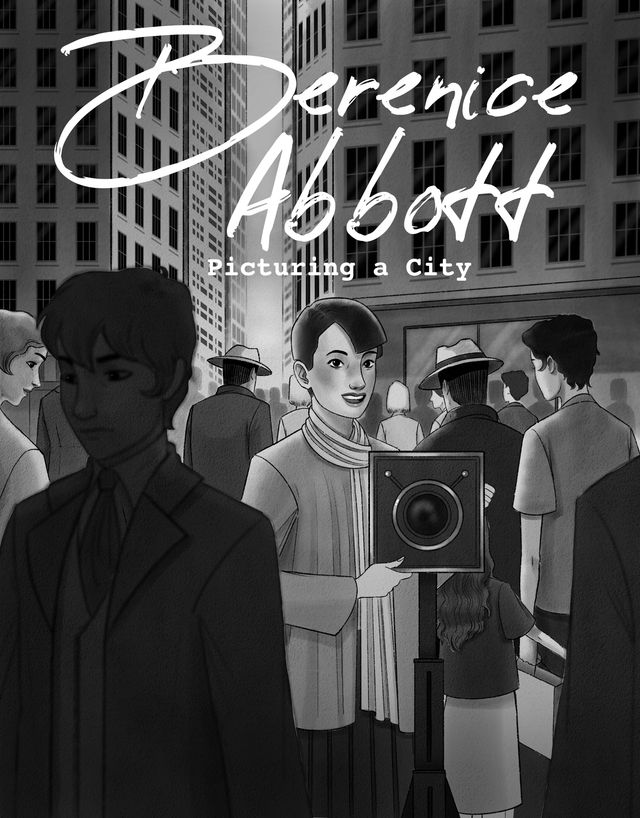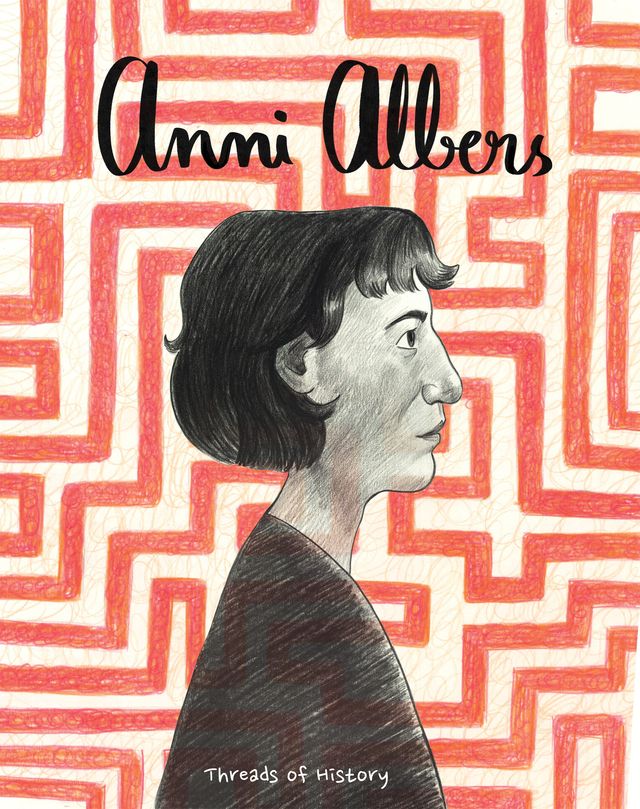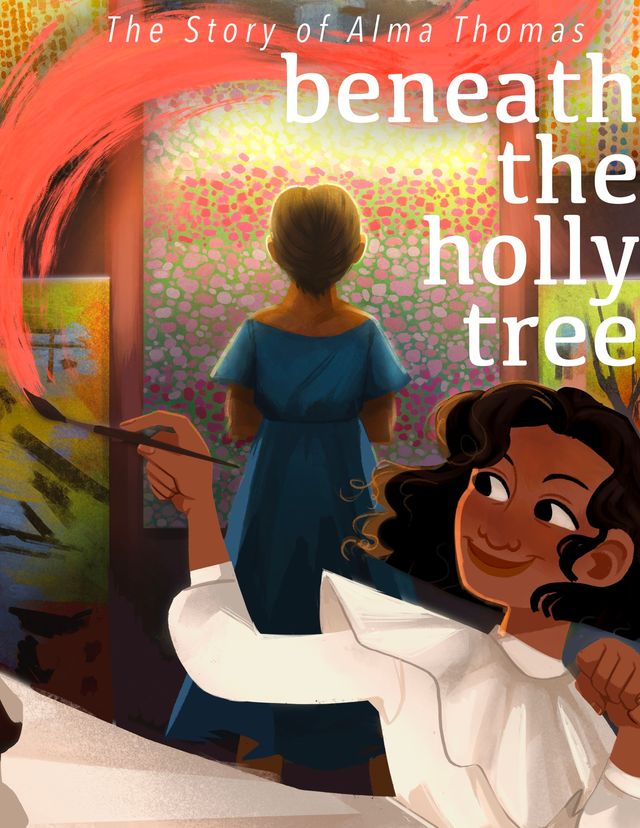An Overview
Nellie Mae Rowe was one of the first self-taught Black women to be widely celebrated for her art. After a childhood lost to hard labor and twice widowed, she dedicated herself to creating art. Her imaginative works are filled with joy, playfulness, and pride.
This comic is part of a series Drawn to Art: Tales of Inspiring Women Artists that illuminates the stories of women artists in the collection of the Smithsonian American Art Museum. Inspired by graphic novels, these short takes on artists’ lives were each drawn by a student-illustrator from the Ringling College of Art and Design.
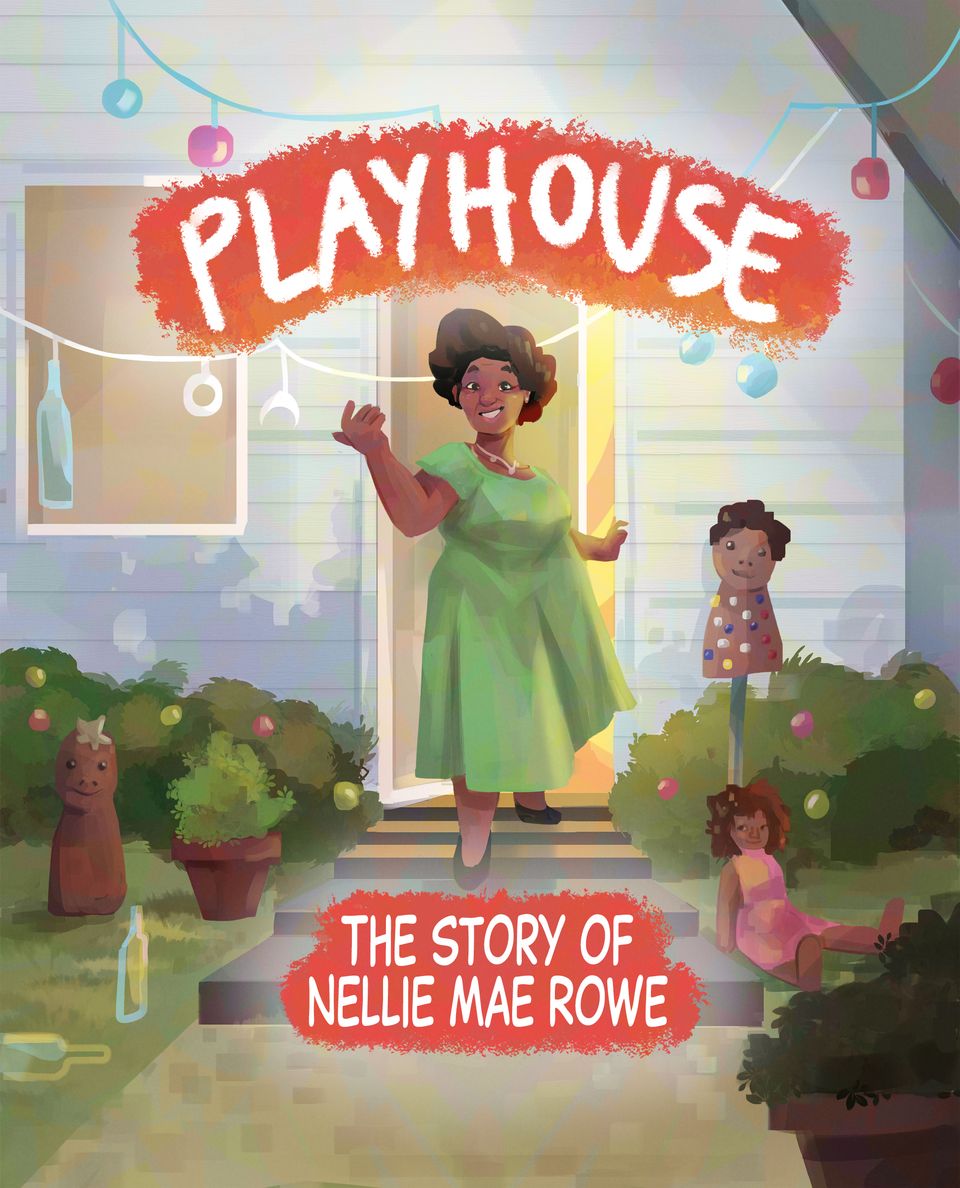
Artist Nellie Mae Rowe stands at the doorway of her house. She’s a Black woman with curly dark brown hair, medium dark skin, and a genuine smile. She is wearing a long, green dress with short sleeves, a silver necklace, and flat black shoes. Above Nellie is white text against a red background with the title of the comic, “Playhouse.”
Nellie stands at her doorstep and gestures with her right hand to invite the viewer into her artistic house. Just below her feet is more text, reading: “The Story of Nellie Mae Rowe.” Several items decorate her home and its lawn; dangling glass bottles and ornaments are strung together to frame the building. The front of her white house has small, lush green bushes adorned with ornaments. Dolls and mannequin heads also decorate the yard. On the left, one rests on the ground. It is brown with a tuft of yellow hair at the top and a smile on its face. Another mannequin stands tall, held up by a metal pole. It is brown with curly black hair and several colorful ornaments on its cone-shaped body. Sitting against the base of the rod is a doll that the artist made. The doll has brown skin, brown curly hair, and a beautiful pink and yellow dress. Scattered around the lawn are colorful glass bottles and potted plants.
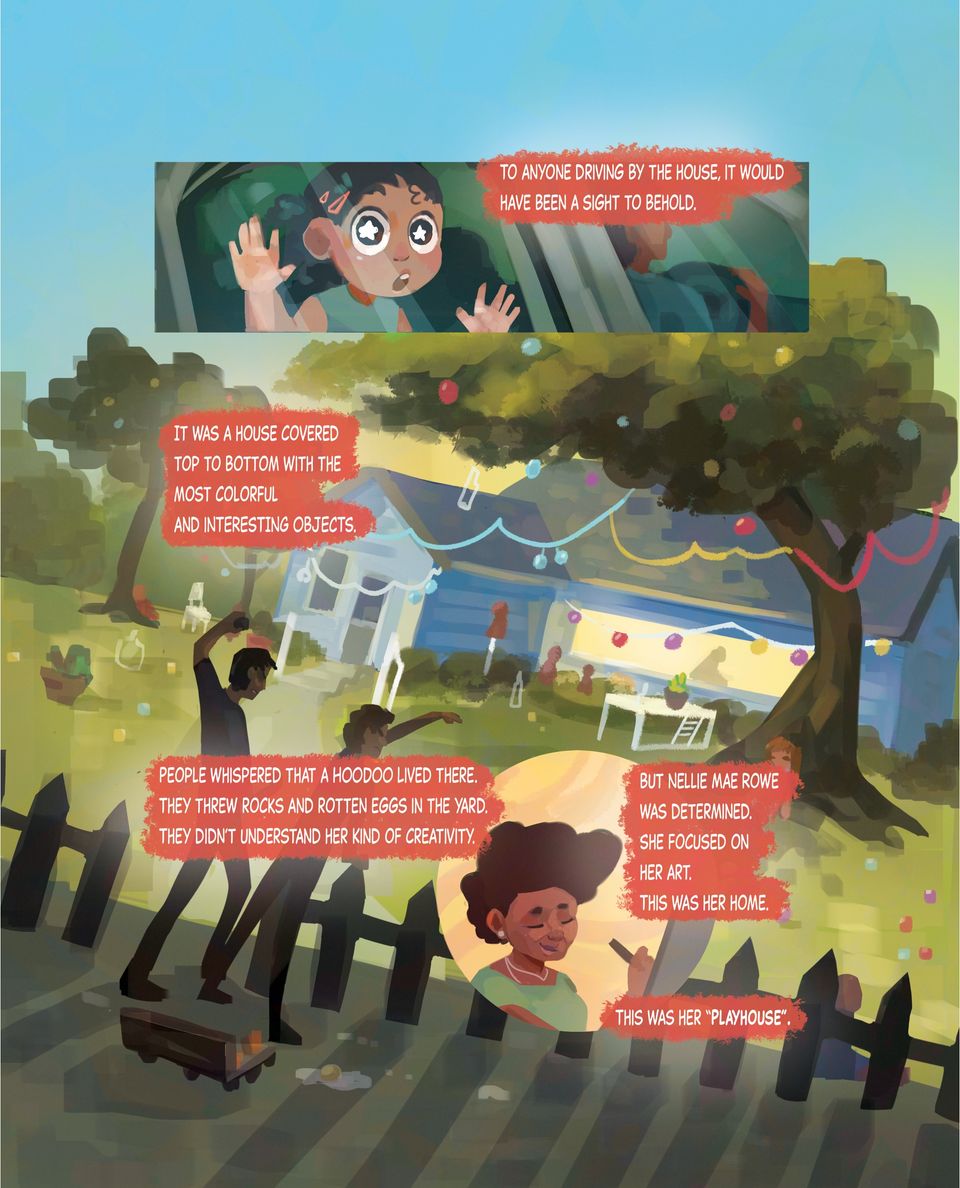
Panel 1:
A little girl sits in the back of a car, staring out the window. Her curly dark brown hair is tied back in a ponytail, and little colorful clips decorate her scalp. She presses her hands against the car window, her eyes widen in wonder as she is astonished by the view. An adult is driving the car, calming looking ahead through the windshield. A text box in the upper right corner reads: “To anyone driving by the house, it would’ve been a sight to behold.”
An illustration of Nellie’s house takes up most of the page. A dramatic angle of the beautifully decorated home, embellished with ornaments, streamers, dolls, bottles, mannequins, and potted plants fills the space. A text box reads: “It was a house covered top to bottom with the most colorful and interesting objects.” A dark, unpainted picket fence sits a few feet in front of Nellie’s home. Two angry men, shadowed but wearing dark clothes and brown hair, stand behind it, throwing rocks and eggs onto her property. An open carton of eggs sits on the sidewalk beside them. Text over top of them reads, “People whispered that a hoodoo lived there. They threw rocks and rotten eggs in the yard. They didn’t understand her kind of creativity.” A small, circular panel of Nellie in her sea-green dress with pearls and matching earrings, is set in the lower right corner. She is painting on an easel with a smile on her face and eyes half-closed in happiness. The text reads: “But Nellie Mae Rowe was determined. She focused on her art. This was her home. This was her “Playhouse.”
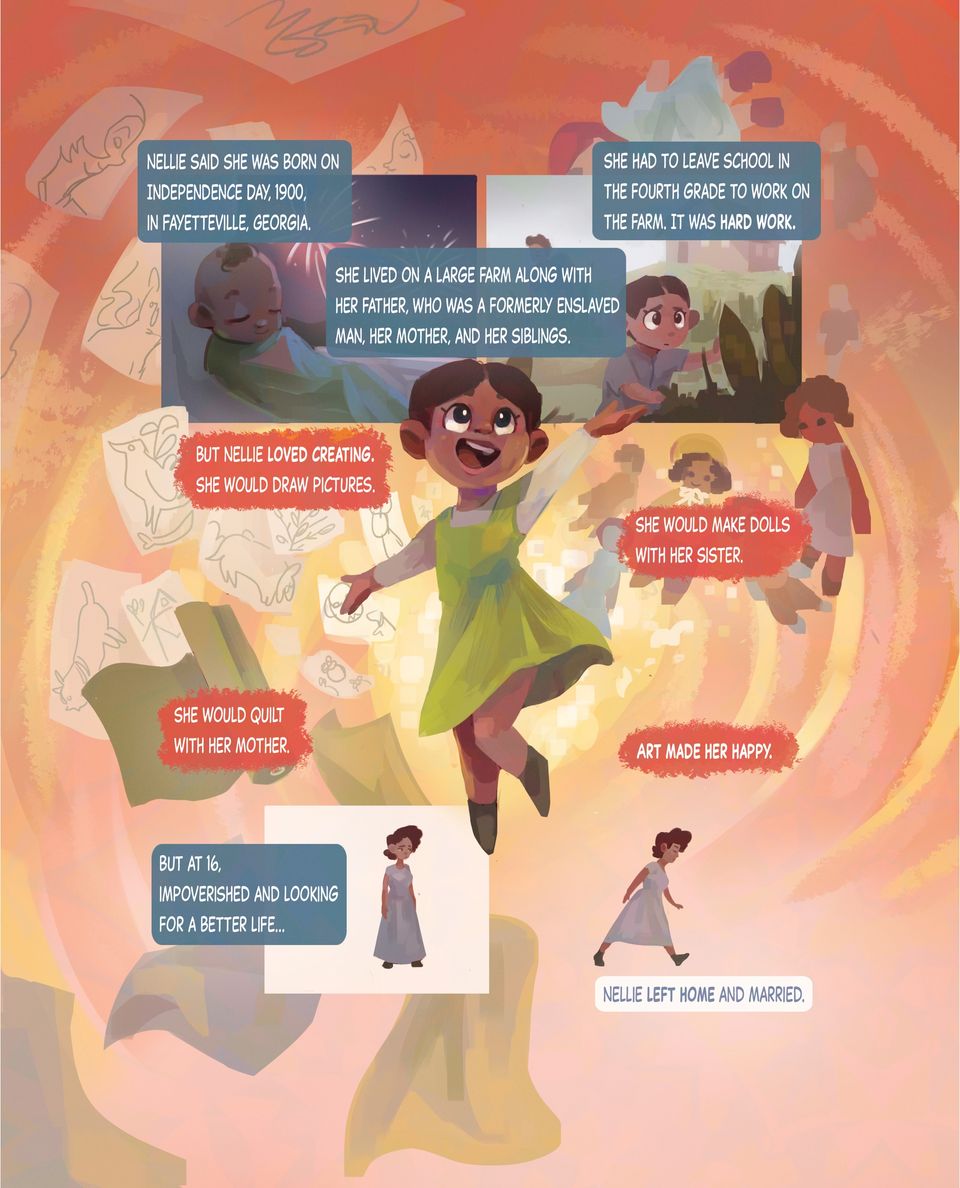
Panel 1:
Text on the top left reads: “Nellie said she was born on Independence Day, 1900, in Fayetteville, Georgia.” A newborn Nellie sleeps peacefully in her pale green blanket by an open window. Bright, beautiful fireworks explode in the background. She has medium brown skin and a tuft of dark curly brown hair on the top of her head.
To the right, text reads:
“She lived on a large farm along with her father, who was a formerly enslaved man, her mother, and her siblings. She had to leave school in the fourth grade to work on the farm. It was hard work.”
Panel 2:
Nellie is a little bit older, about 6 years old. Her hair is pulled back tight from her face, and she’s overwhelmed with farm work, which includes picking out vegetables from a field. Her house sits on a hill in the very back. Her parents work in the distance. She wears a look of concern on her face. Text reads: “She had to leave school in the fourth grade to work on the farm. It was hard work.”
Panel 3:
Slightly overlapping these two panels and filling the rest of the page, 6-year-old Nellie magically floats in the air. Nellie wears a green jumper with a long-sleeved white undershirt. She is delighted as her drawings, quilts, and dolls fly around her in a pink and yellow spiral. Bright yellow and pink lights glisten all around. More text scatters around her. Text reads: “But Nellie loved creating. She would draw pictures. She would make dolls with her sister. She would quilt with her mother. Art made her happy.”
Panel 4:
Nellie is 16 and wears a long gray dress with black shoes. She stands in a blank void. To her left, text reads: “But at 16, impoverished and looking for a better life… Nellie left home and married.”
Panel 5:
Nellie is walking away from the lonely white void from the previous panel.
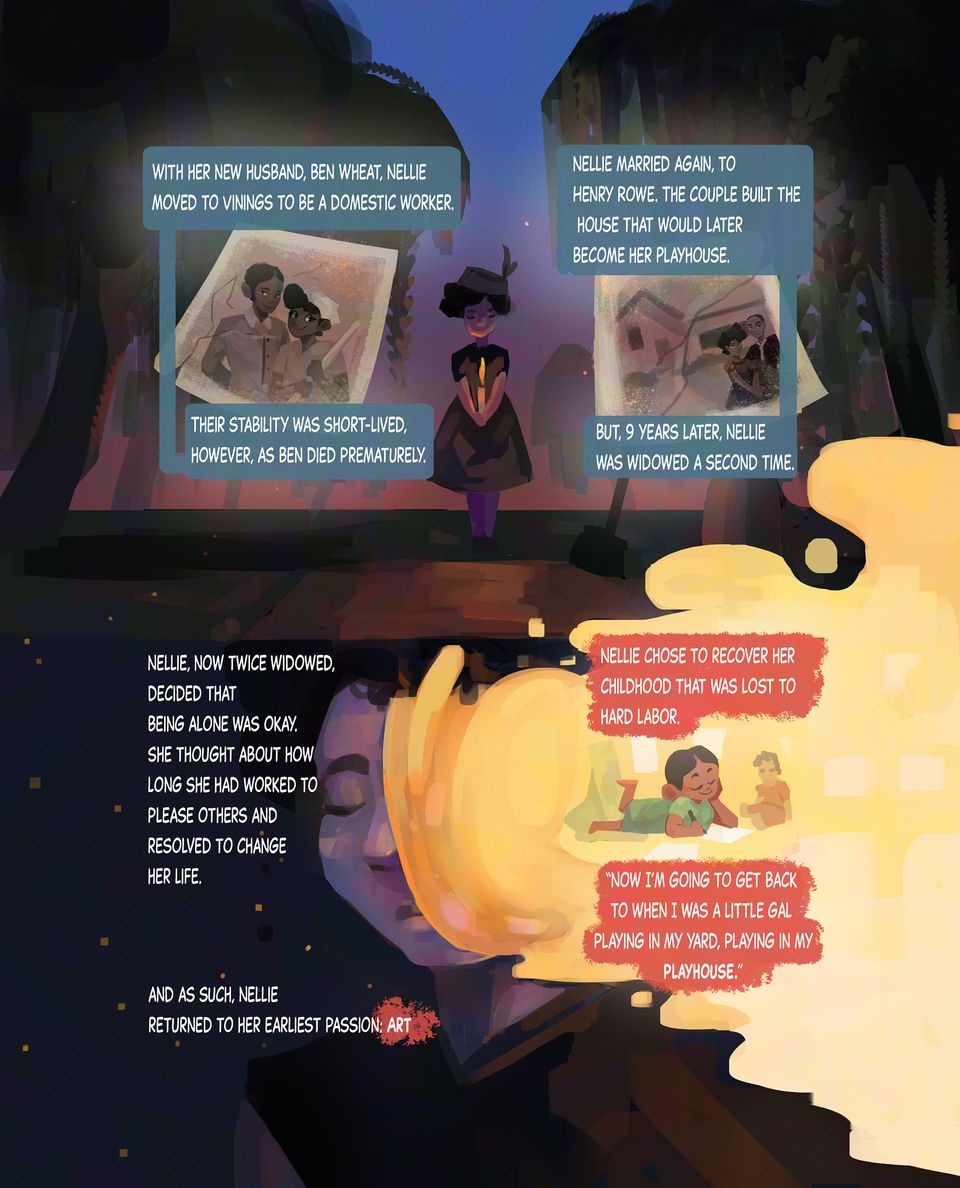
Page 3 is divided into two halves.
Panel 1:
A black and white photograph of Nellie Mae Rowe and her husband at the time. The text reads, “With her new husband, Ben Wheat, Nellie moved to Vinings to be a domestic worker. Their stability was short-lived, however, as Ben died prematurely.” Another photo is on the right, with Nellie Mae Rowe and her second husband, in front of a new home. The text reads, “Nellie married again, to Henry Rowe. The couple built the house that would later become her playhouse. But, nine years later, Nellie was widowed a second time.” Present Nellie stands between these two photos in funeral attire. She wears a black cap with a feather on the top, a long black dress, and black shoes. She holds a candle in front of her and looks down at the flame, saddened by the premature losses of her partners. Two large swooping weeping willow trees surround her as the sun sets into the night. The sky fades from a nightly blue to a purple-red on the horizon. A shovel is poking out of the ground on the right.
Panel 2:
A portrait of Nellie, saddened by the death of her partners. Half of her face is obstructed by a honey-colored light seemingly coming from her mind. The text beside her reads, “Nellie, now twice widowed, decided that being alone was okay. She thought about how long she had worked to please others and resolved to change her life. And as such, Nellie returned to her earliest passion: art.” In the center of the honey-colored light, a memory of Nellie as a child emerges. She’s lying on her stomach with her feet kicked up with a green outfit on. Little Nellie is drawing on some paper on the ground with a doll by her side. The text reads: “Nellie chose to recover her childhood that was lost to hard labor.” Nellie says, “Now I’m going to get back to when I was a little gal playing in my yard, playing in my playhouse.”
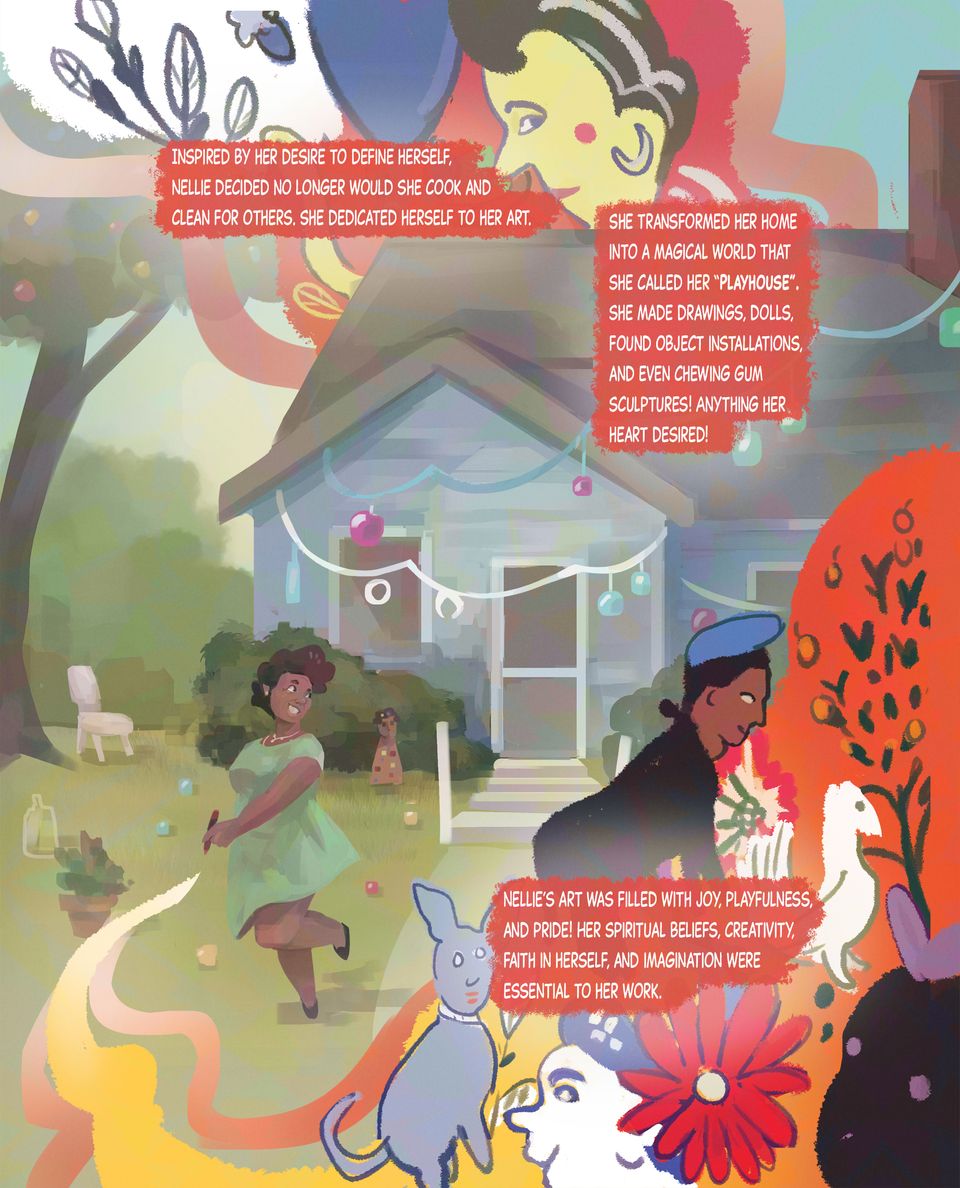
The illustration fills the entire page. Text reads: “Inspired by her desire to define herself, Nellie decided no longer would she cook and clean for others. She dedicated herself to art. She transformed her home into a magical world that she called her “Playhouse.” She made drawings, dolls, found object installations, and even chewing gum sculptures! Anything her heart desired!”
Nellie dances in her yard in front of her house with a paintbrush in hand. She’s looking over her shoulder, excited as her brush paints vivid imagery across the page. Inspired by Nellie’s own paintings, red and yellow paint strokes swirl from her hands. Nellie’s work is artistically child-like, with many simple shapes and flat perspectives. Out of the paint strokes, there are people, a cat, a bird, and plants. Behind Nellie, her house and lawn remain decorated with her colorful ornaments and streamers. Her mural swirls behind the house and into the sky; there is a portrait of a woman in a black dress and blue hat bending over a bright orange tree and other fauna including a plant with red leaves.
A text box in the bottom right corner reads: “Nellie’s art was filled with joy, playfulness, and pride! Her spiritual beliefs, creativity, faith in herself, and imagination were essential to her work.”

Panel 1:
Text at the top reads: “Nellie Mae Rowe’s talents were eventually recognized nationally, and she became one of the first self-taught, Black women to be widely celebrated for her art. However, Nellie was an artist who, at her core, was always committed to her roots and cared about her community.” Nellie stands at the center of the panel, with her back facing the reader and hands clasped together behind her back. She is looking at her large, beautiful paintings filled with colorful plants, animals, and people, hanging on the walls in a museum gallery. Other silhouetted figures stand nearby, viewing other pieces of the installation.
Panel 2:
A large illustration of a little girl standing on the front steps of Nellie’s house; it’s the same young girl from the car earlier in the comic. Her eyes are wide, and she holds her hands together in anticipation. She wears a green tank top, blue pants, and has orange clips in her hair. The little girl’s parents parked their car behind Nellie’s white picket fence.
Panel 3:
Nellie offers her hand to the little girl as an invitation to tour the playhouse. The text continues: “Despite the adversity in her life, Nellie’s door was open to all. Until the end of her days, she would open her door to anyone curious.” Nellie, in a green dress and white necklace, smiles sweetly at the little girl and graciously holds her hand to lead her in. Text reads: “She would give them a warm smile, and then she’d invite them in.”

At the center of the page is a small illustration of Nellie’s house and lawn against a creamy white background. The white house has streamers and colorful ornaments, all framed by a large tree on the right. The text reads: “Illustrated by Micah Eubanks.”














